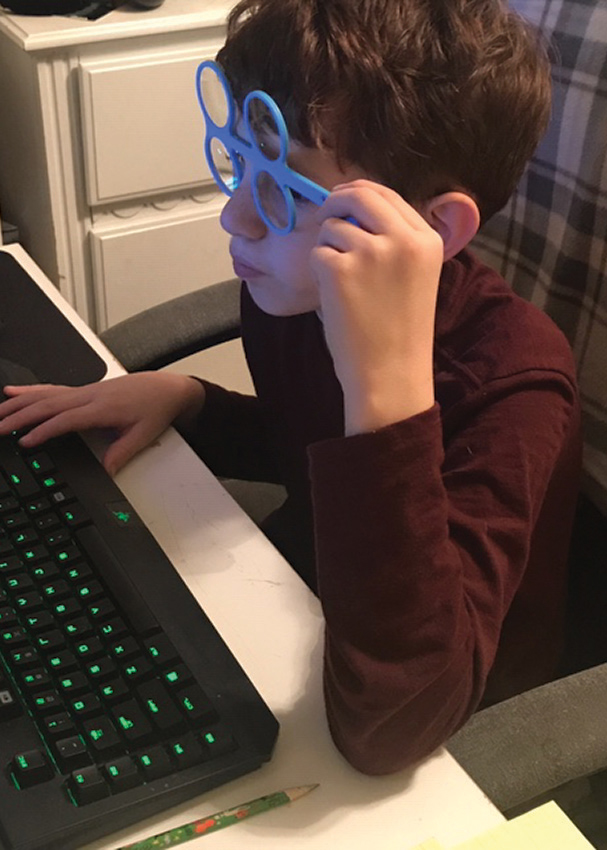 |
|
Children with symptomatic convergence maintained improvements in NPC and PFV one-year after completing 16 weeks of vergence/ accommodative therapy. Photo: Marie Bodack, OD, and Erin Jenewein, OD. Click image to enlarge. |
A recent study of children with convergence insufficiency demonstrated that improvements in the near point of convergence (NPC) and positive fusional vergence (PFV) measurements following office-based vergence/accommodative therapy were maintained one year after treatment completion.
The Convergence Insufficiency Treatment Trial-Attention and Reading Trial (CITT-ART) enrolled 310 children between nine and 14 years old with symptomatic convergence insufficiency. Eligible participants were randomized 2:1 to vergence/accommodative therapy or placebo therapy, respectively. Patients in the vergence/accommodative therapy group underwent a 16-week program of weekly 60-minute sessions of office-based therapy; home reinforcement therapy was also prescribed.
Among enrolled patients, 303 completed their 16-week primary outcome visit. Of those, 89%, or 270 patients, returned for their one-year follow-up visit. A total of 91% (181 of 199) of patients in the vergence/accommodative therapy group returned for this visit. Of these, 67% (n=121) did not receive any additional treatment between the 16-week primary outcome visit and the one-year follow-up visit.
Data showed no significant change in the mean adjusted NPC at one year among the 121 patients who returned for their one-year follow-up visit. Researchers observed a statistically significant decrease in mean-adjusted PFV at one year. “There were similar percentages of participants classified as ‘normal,’ ‘normal and/or improved’ and ‘normal and improved’ based on NPC and PFV at the one-year visit compared with the 16-week primary outcome visit.”
The researchers found that 92% of children who underwent treatment for convergence insufficiency had a normal or improved near point of convergence one year following the completion of office-based vergence/accommodative therapy, according to findings reported in the journal Ophthalmic and Physiological Optics. Additionally, 91% of children still had normal and/or improved fusional convergence one-year post-therapy.
“Improvements in NPC and PFV were maintained in children with convergence insufficiency who were randomized to vergence/accommodative therapy in the CITT-ART study, completed both the primary outcome and one-year follow-up visits and reported receiving no additional treatment during the one-year interval,” the study authors concluded.
Morrison AM, Kulp MT, Cotter SA, et al. One-year follow-up of clinical convergence measures in children enrolled in the Convergence Insufficiency Treatment Trial—Attention and Reading Trial. Ophthalmic Physiol Opt. August 14, 2024 [Epub ahead of print]. |


